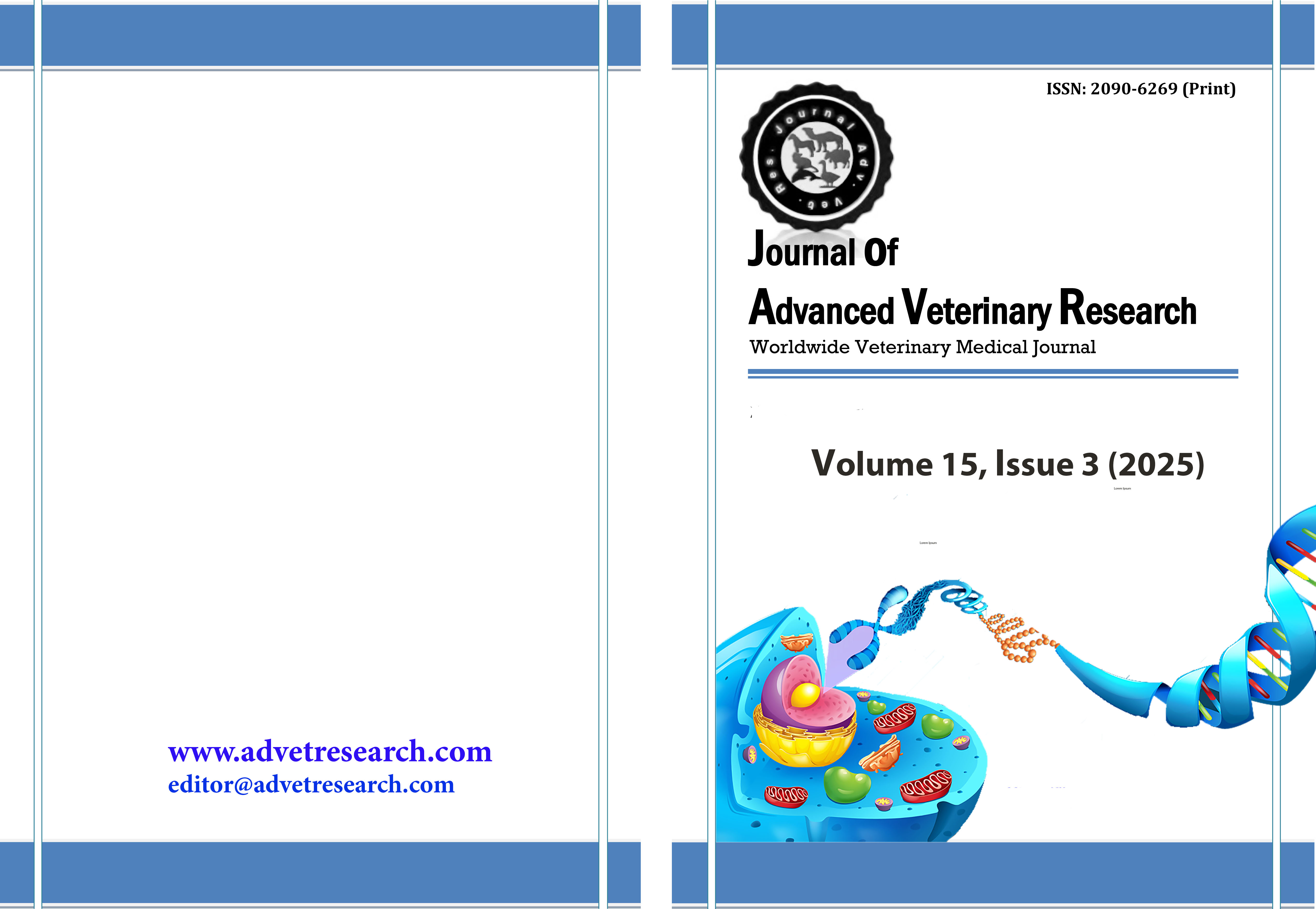Detection of iss virulence gene in Avian Pathogenic Escherichia coli multidrug resistance from quail cloacal swabs in traditional markets in Surabaya, Indonesia
Keywords:
APEC, iss, colibacilosis, MDR, public healthAbstract
Quail is a source of animal protein that is widely consumed in Indonesia. Quail is susceptible to Escherichia coli bacterial infection, especially the Avian Pathogenic Escherichia coli (APEC) strain which can cause colibacillosis and is zoonotic. This infection is characterized by symptoms of pericarditis, perihepatitis, salpingitis, and colisepticemia. Antibiotic resistance in APEC is a serious challenge, including Multidrug Resistance (MDR), which reduces the effectiveness of treatment and increases the risk of pathogen spread. This study aimed to detect the iss virulence gene in APEC isolates from quail cloacal swabs in five areas of Surabaya. The identification results showed a prevalence of E. coli of 98% (138/140) with the highest antibiotic resistance levels in erythromycin (61%), streptomycin (37%), ciprofloxacin (35%), tetracycline (22%), and aztreonam (14%). The occurrence of MDR was found in 18% of isolates, with the highest resistance pattern ATM/CIP/S/E (32%). PCR test showed (20%) isolates have the iss virulence gene. The iss gene in APEC is known to increase the ability of bacteria to survive in blood serum, thus potentially affecting poultry health and causing zoonotic risks. This study revealed high levels of antibiotic resistance, MDR, and the presence of dangerous pathogen virulence genes in E. coli isolates from Surabaya traditional markets. The need for antibiotic surveillance and implementation of biosecurity according to the One Health concept to prevent the spread of resistant pathogenic bacteria and their impact on human, animal, and environmental health.
Downloads
Published
How to Cite
Issue
Section
License
Copyright (c) 2025 Journal of Advanced Veterinary Research

This work is licensed under a Creative Commons Attribution-NonCommercial-NoDerivatives 4.0 International License.
Users have the right to read, download, copy, distribute, print, search, or link to the full texts of articles under the following conditions: Creative Commons Attribution-NonCommercial-NoDerivatives 4.0 International (CC BY-NC-ND 4.0).
Attribution-NonCommercial-NoDerivs
CC BY-NC-ND
This work is licensed under a Creative Commons Attribution-NonCommercial-NoDerivatives 4.0 International (CC BY-NC-ND 4.0) license




